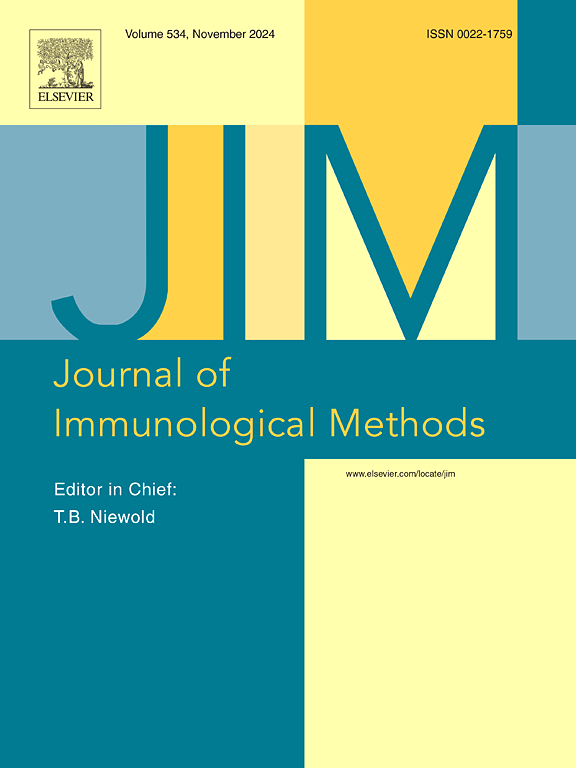Deciphering the autoreactome: Massively parallelized methods for autoantibody detection in humans
IF 1.6
4区 医学
Q4 BIOCHEMICAL RESEARCH METHODS
引用次数: 0
Abstract
Autoantibodies have a substantial impact on human health ranging from autoimmune diseases to cancer diagnostics. Knowledge of the antigens recognized can allow for more accurate diagnostics, a better understanding of pathogeneses and thus improved prevention, as well as laying the foundation for the development of new therapies. A critical step to acquire this knowledge is to detect the exact self-antigens targeted by autoantibodies out of the pool of 20,000 human proteins against which reactivities could be observed.
Here, we review established and emerging methods for highly parallelized autoantigen detection such as human proteome microarrays, serological identification of antigens by screening of cDNA expression libraries (SEREX), serological proteome analysis (SERPA), phage display immunoprecipitation sequencing (PhIP-Seq), parallel analysis of translated ORFs (PLATO), and rapid extracellular antigen profiling (REAP). We highlight advantages and limitations of these methods, aiming to give a guideline to choose the appropriate method for a certain application.

破译自身反应组:人类自身抗体检测的大规模并行方法
自身抗体对人类健康有重大影响,从自身免疫性疾病到癌症诊断。了解所识别的抗原可以使诊断更准确,更好地了解发病机制,从而改进预防,并为开发新疗法奠定基础。获得这一知识的关键一步是从20,000个人类蛋白质中检测出自身抗体所针对的确切的自身抗原,这些抗原的反应性可以被观察到。在这里,我们回顾了现有的和新兴的高度并行的自身抗原检测方法,如人类蛋白质组微阵列、通过筛选cDNA表达文库(SEREX)对抗原进行血清学鉴定、血清学蛋白质组分析(SERPA)、噬菌体展示免疫沉淀测序(PhIP-Seq)、翻译orf的平行分析(PLATO)和快速细胞外抗原分析(REAP)。本文重点介绍了这些方法的优点和局限性,旨在为特定应用选择合适的方法提供指导。
本文章由计算机程序翻译,如有差异,请以英文原文为准。
求助全文
约1分钟内获得全文
求助全文
来源期刊
CiteScore
4.10
自引率
0.00%
发文量
120
审稿时长
3 months
期刊介绍:
The Journal of Immunological Methods is devoted to covering techniques for: (1) Quantitating and detecting antibodies and/or antigens. (2) Purifying immunoglobulins, lymphokines and other molecules of the immune system. (3) Isolating antigens and other substances important in immunological processes. (4) Labelling antigens and antibodies. (5) Localizing antigens and/or antibodies in tissues and cells. (6) Detecting, and fractionating immunocompetent cells. (7) Assaying for cellular immunity. (8) Documenting cell-cell interactions. (9) Initiating immunity and unresponsiveness. (10) Transplanting tissues. (11) Studying items closely related to immunity such as complement, reticuloendothelial system and others. (12) Molecular techniques for studying immune cells and their receptors. (13) Imaging of the immune system. (14) Methods for production or their fragments in eukaryotic and prokaryotic cells.
In addition the journal will publish articles on novel methods for analysing the organization, structure and expression of genes for immunologically important molecules such as immunoglobulins, T cell receptors and accessory molecules involved in antigen recognition, processing and presentation. Submitted full length manuscripts should describe new methods of broad applicability to immunology and not simply the application of an established method to a particular substance - although papers describing such applications may be considered for publication as a short Technical Note. Review articles will also be published by the Journal of Immunological Methods. In general these manuscripts are by solicitation however anyone interested in submitting a review can contact the Reviews Editor and provide an outline of the proposed review.

 求助内容:
求助内容: 应助结果提醒方式:
应助结果提醒方式:


